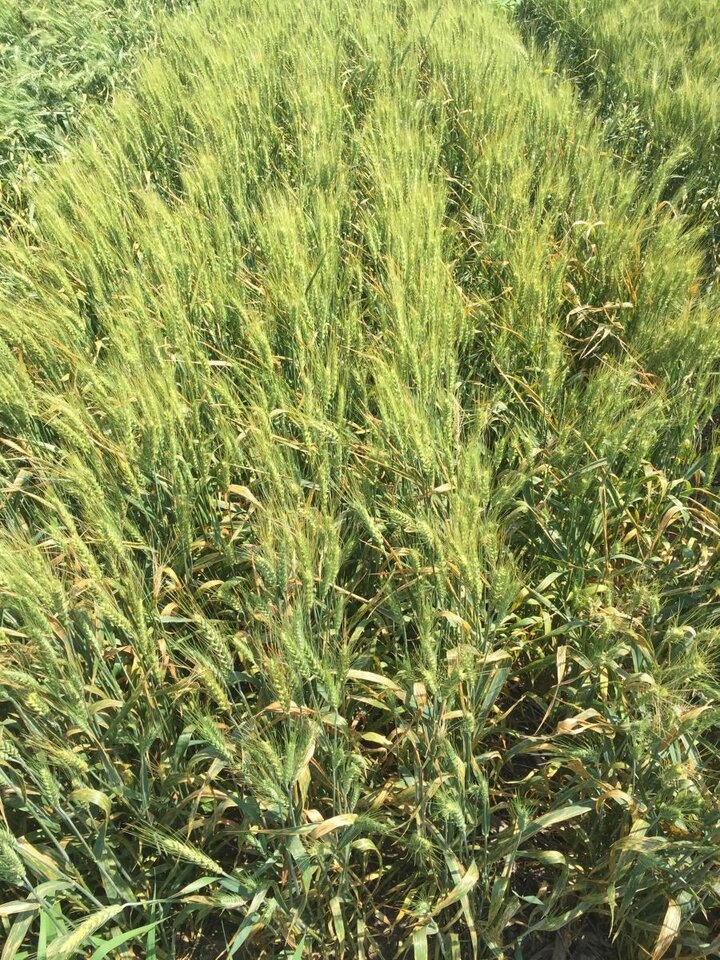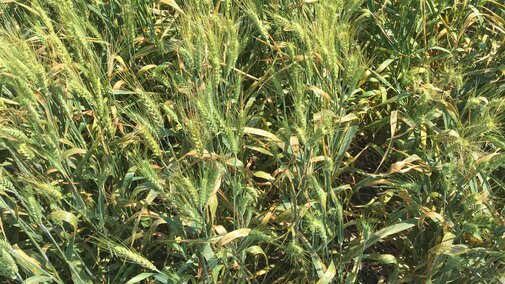Bacterial leaf streak symptoms on the flag leaf of winter wheat are on the rise this June in east central Nebraska. The disease is impacting fields regardless of whether a fungicide was sprayed at flowering, since the causal agent is a bacterium, Xanthomonas translucens pv. undulosa. This is not to be confused with a different bacterium, Xanthomonas vasicola pv. vaculorum, referred to as bacterial leaf streak in corn.
Typically, bacterial leaf streak is more common in irrigated wheat fields and in higher rainfall areas like eastern Nebraska. The most noticeable symptoms are dark brown water-soaked lesions within the veins on the flag leaf. As the symptoms progress, the leaf tip will start to die, creating an overall orange-looking canopy from a distance. This disease can significantly damage the flag leaf that is critical to yield contributions during grain fill.


Figure 1. Comparison of bacterial leaf streak symptoms in the same variety of wheat in 2017 and in 2018. (Photos by Nathan Mueller)
Also see: Wheat Disease Update for Central to Western Nebraska
Management
Nothing can be done to control bacterial leaf streak this season. The bacteria can survive on residue and in the soil, though most pathologist feel that seed is the main inoculum source. Growers are encouraged to purchase pathogen-free certified seed. There are susceptibility differences among winter wheat varieties to bacterial leaf streak. Selecting varieties that are less susceptible to bacterial leaf streak is an option, but should considered with other traits needed for local adaption and management. For example, SY Wolf and Overland are two varieties known to be less susceptible to bacterial leaf streak.
Other Resources You Might Like
- Wheat Update: Diseases Increasing (June 13, 2018 CW)
- Bacterial Leaf Streak Developing in South Dakota Winter Wheat (SDSU iGrow)
- Black Chaff of Wheat (NebGuide 1672)

